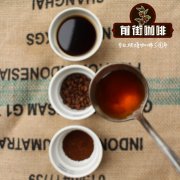Three waves of coffee what is the second wave of coffee? what is the first wave of coffee?

Professional coffee knowledge exchange More coffee bean information Please pay attention to coffee workshop (Weixin Official Accounts cafe_style)
The first and second waves of coffee are like a history lesson, and when everyone realizes that we are in a whole new, definitely third coffee era, we go back in time. So what are these waves, and how did we suddenly get to the third wave? Let's break it down.
The first wave: coffee was generally thought to be something you wanted to drink from around the 15th century. Coffee flourished in Europe in the 17th century, spread to America in the 18th century, grew 18 million coffee trees, and 50 years later became a global commodity. Into vacuum-sealed packaging and instant coffee, it is now a widespread staple food in early 20th century homes. These are your Cup O Joe days, when you're two creams and one sugar, the "I just need to wake up" wave. The first wave can largely be seen as an era when coffee was no longer reserved for the elite, but became a more ubiquitous and practical drink to warm up at home on cold mornings and get your brain into work mode before punching the clock.
Wave 2: In the mid-20th century, coffee chains grew by reintroducing an emphasis on taste and quality. If the first wave was about global awareness that coffee is a beverage we humans love, the second wave was about talking about it. Coffee returns as a social drink, sipping quietly under the dim lights of your local cafe, nodding to friends describing the script they are writing, occasionally interrupted by statements like,"Yeah, wow, that's some good coffee." The second wave is defined by its new understanding of roasting styles and coffee origins, elevating the experience and meaning of drinking coffee. This marks the beginning of specialty coffee, officially distinguishing itself from the first wave of bad coffee.
END
Important Notice :
前街咖啡 FrontStreet Coffee has moved to new addredd:
FrontStreet Coffee Address: 315,Donghua East Road,GuangZhou
Tel:020 38364473
- Prev

What are the 90 + patent treatment methods? What are the coffee flavor characteristics of 90 + patent treatment? ninety
V professional coffee knowledge exchange more coffee bean information please follow the coffee workshop (Wechat official account cafe_style) Qianjie Coffee brief 90 + patent treatment 90 + founder Joseph Brodsky, he found that the world's high-quality coffee beans originated in Ethiopia, 90% of the raw beans come from the original varieties of Ethiopia, even the rosy summer of Panamanian estates.
- Next

Front Street Coffee is the main feature of the third wave of coffee
Professional coffee knowledge exchange More coffee bean information Please pay attention to the main characteristics of the third wave coffee workshop (Weixin Official Accounts cafe_style) Improve coffee quality, more direct trade, more emphasis on sustainability, lighter roasting, innovative brewing methods These are the essence of the third wave coffee. We pursue sweetness, complexity and uniqueness in the brewing process. we are
Related
- Beginners will see the "Coffee pull flower" guide!
- What is the difference between ice blog purified milk and ordinary milk coffee?
- Why is the Philippines the largest producer of crops in Liberia?
- For coffee extraction, should the fine powder be retained?
- How does extracted espresso fill pressed powder? How much strength does it take to press the powder?
- How to make jasmine cold extract coffee? Is the jasmine + latte good?
- Will this little toy really make the coffee taste better? How does Lily Drip affect coffee extraction?
- Will the action of slapping the filter cup also affect coffee extraction?
- What's the difference between powder-to-water ratio and powder-to-liquid ratio?
- What is the Ethiopian local species? What does it have to do with Heirloom native species?

